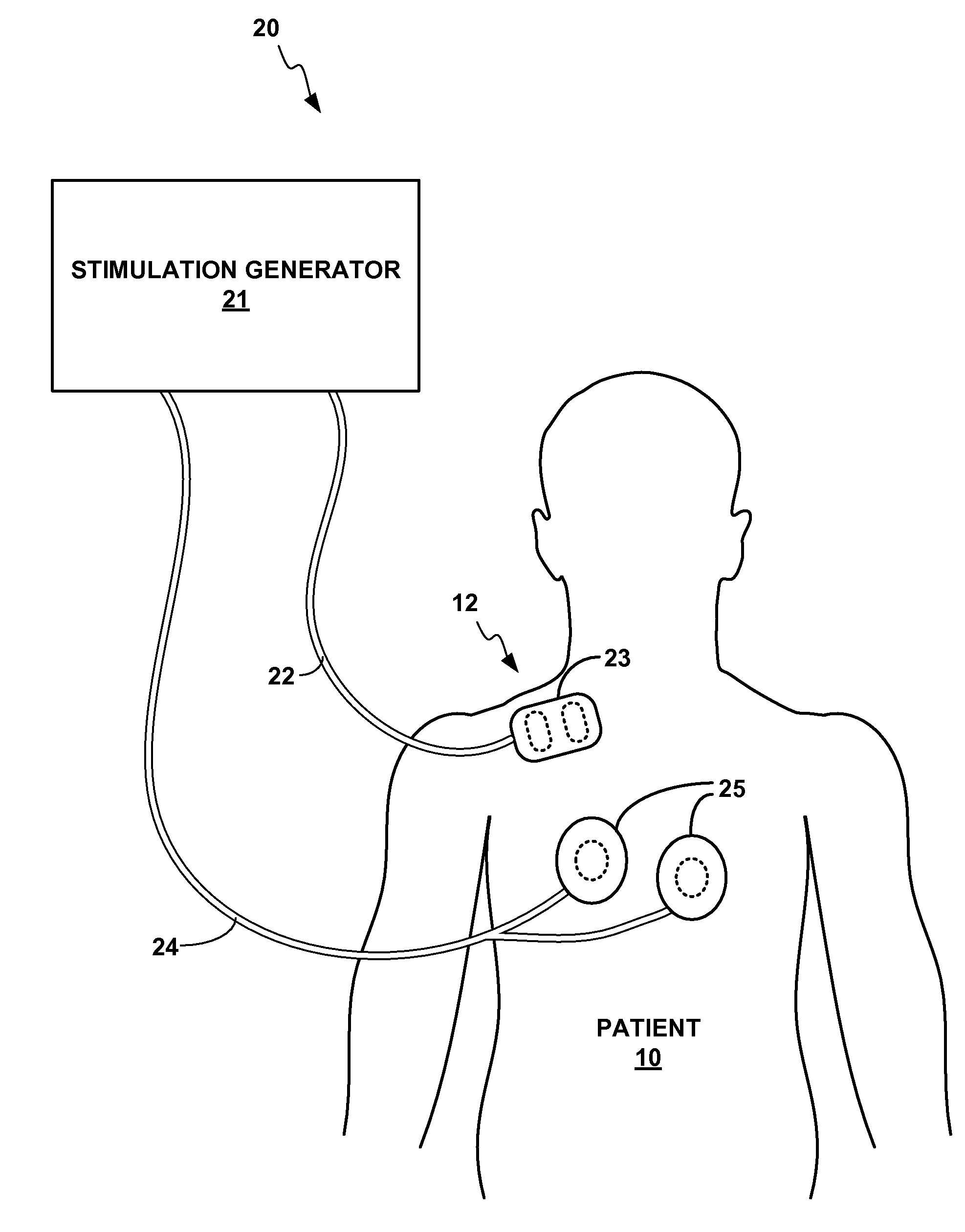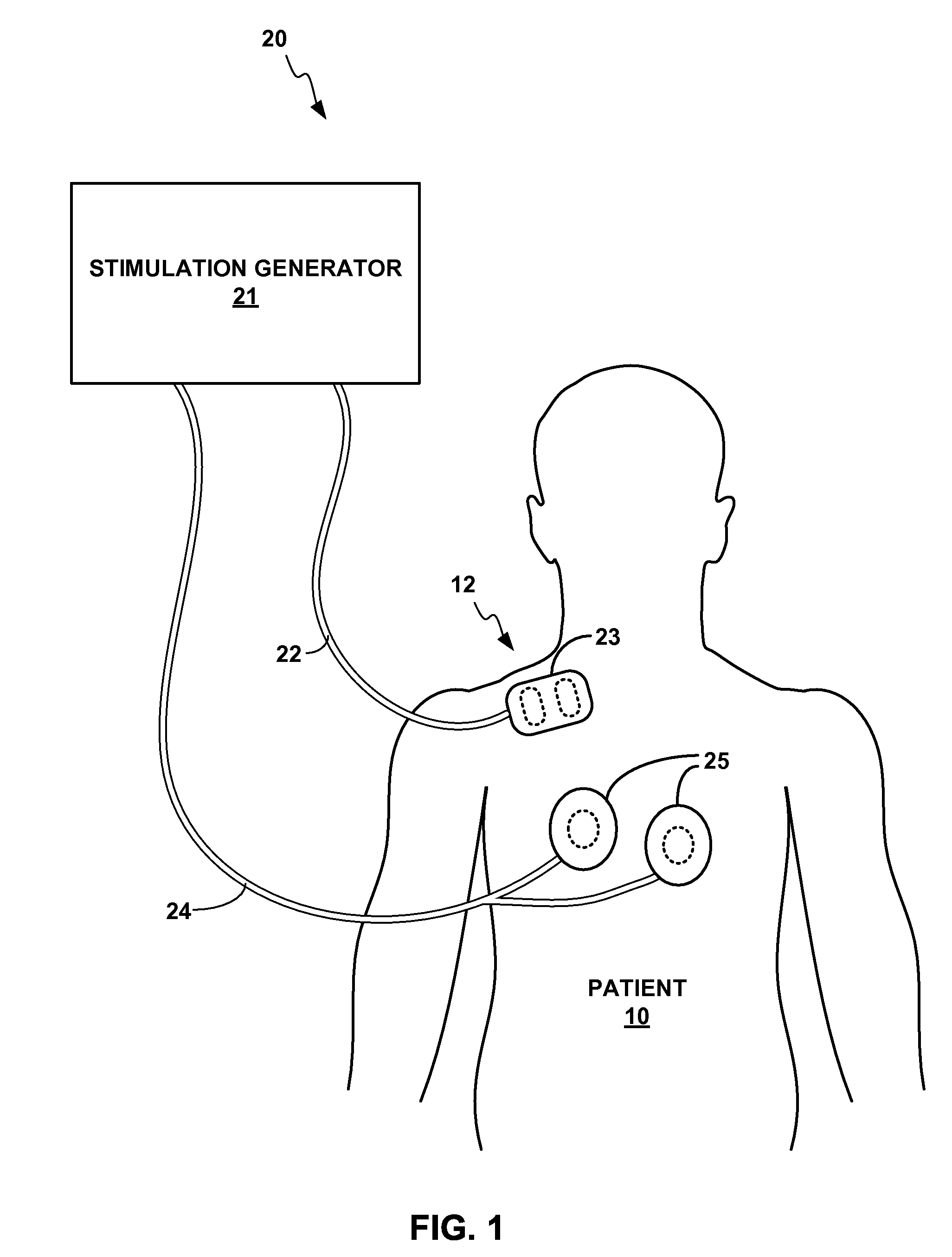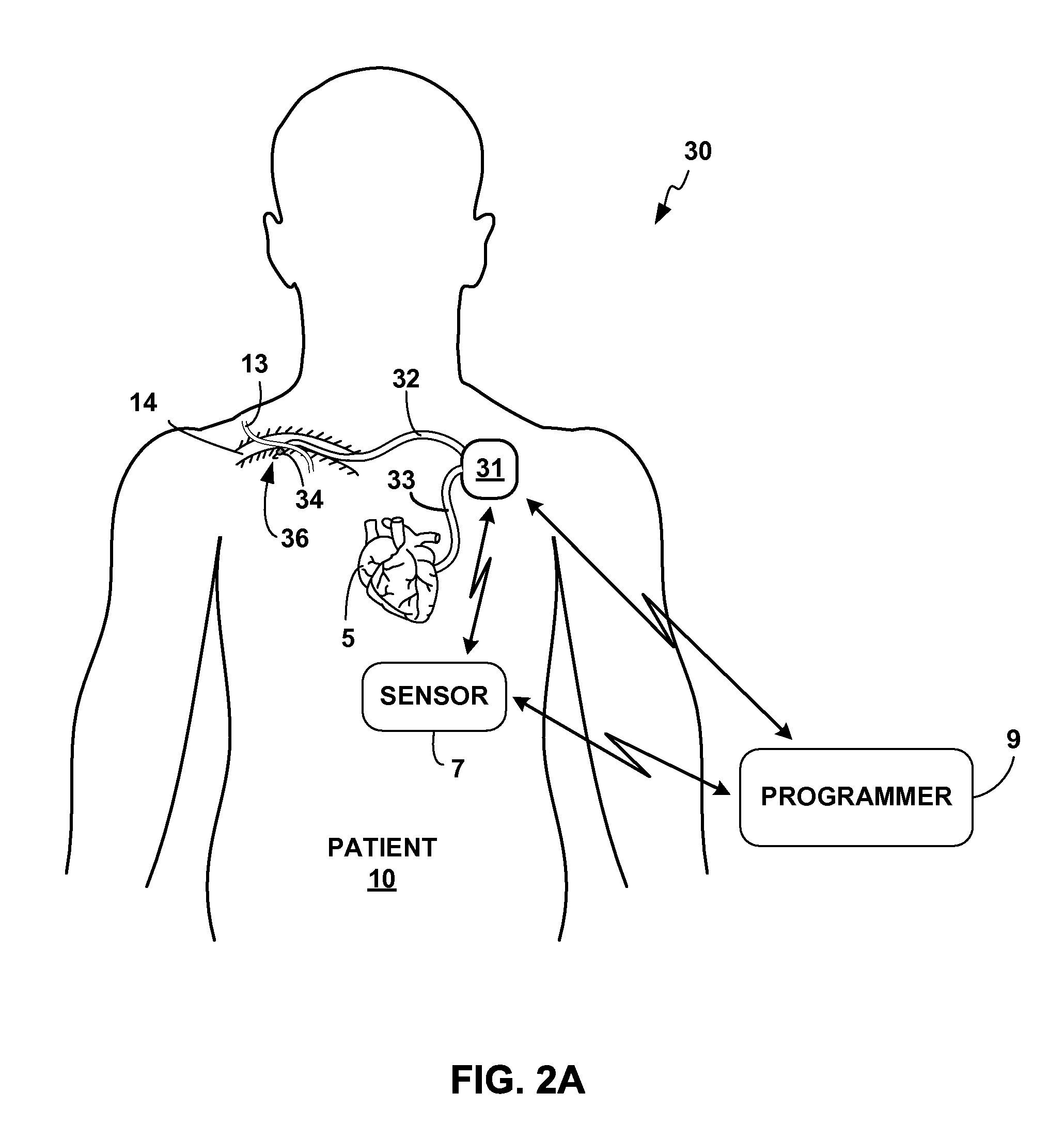Subclavian ansae stimulation
a subclavian ansae and subclavian nerve technology, applied in the field of cardiac performance improvement, can solve the problems of increasing the likelihood of ischemia, ischemia and even myocardial infarction, and the death of over 325,000 people each year, so as to reduce the incidence of ventricular arrhythmias, improve cardiac performance, and reduce the occurrence of ventricular arrhythmias.
- Summary
- Abstract
- Description
- Claims
- Application Information
AI Technical Summary
Benefits of technology
Problems solved by technology
Method used
Image
Examples
Embodiment Construction
[0021]Excitation of the sympathetic nervous system can result in an increased propensity for VT and VF and trigger sudden cardiac death. Spinal cord stimulation (SCS) can suppress activity generated by cardiac neurons, particularly ischemia-induced activation of cardiac neurons by inhibiting the sympathetic nervous system. For example, electrical activation of the dorsal columns at the T1-T2 spinal segments significantly reduces activity generated by intrinsic cardiac neurons in their basal conditions, as well as when activated in the presence of regional ventricular ischemia.
[0022]Canine testing has demonstrated that the suppressor effect of SCS on intrinsic cardiac neural activity is reduced or eliminated when the subclavian ansae is transected. This indicates that reduced activity in intrinsic cardiac neurons is due primarily to the influence of spinal cord neurons acting via the sympathetic nervous system. SCS induces inhibition of impulses in the small-diameter fiber systems in...
PUM
 Login to View More
Login to View More Abstract
Description
Claims
Application Information
 Login to View More
Login to View More - R&D
- Intellectual Property
- Life Sciences
- Materials
- Tech Scout
- Unparalleled Data Quality
- Higher Quality Content
- 60% Fewer Hallucinations
Browse by: Latest US Patents, China's latest patents, Technical Efficacy Thesaurus, Application Domain, Technology Topic, Popular Technical Reports.
© 2025 PatSnap. All rights reserved.Legal|Privacy policy|Modern Slavery Act Transparency Statement|Sitemap|About US| Contact US: help@patsnap.com



